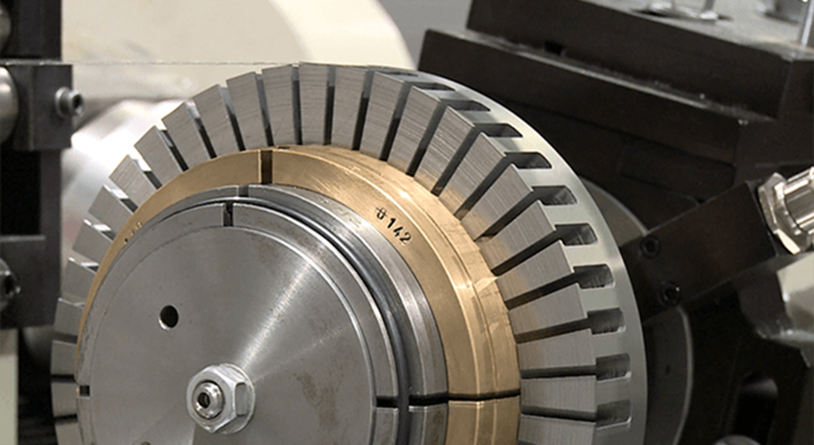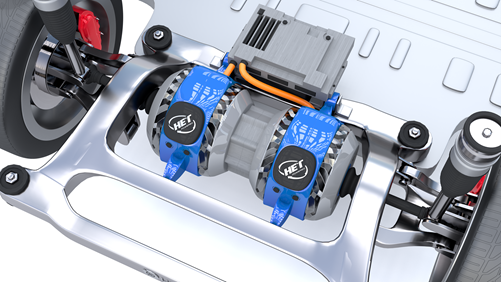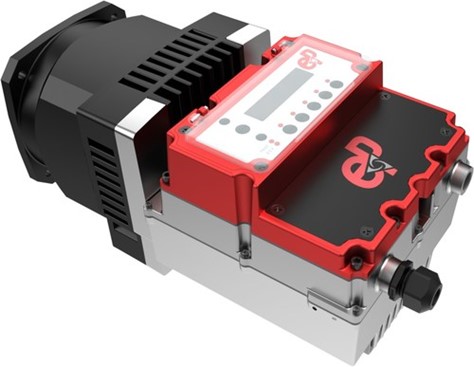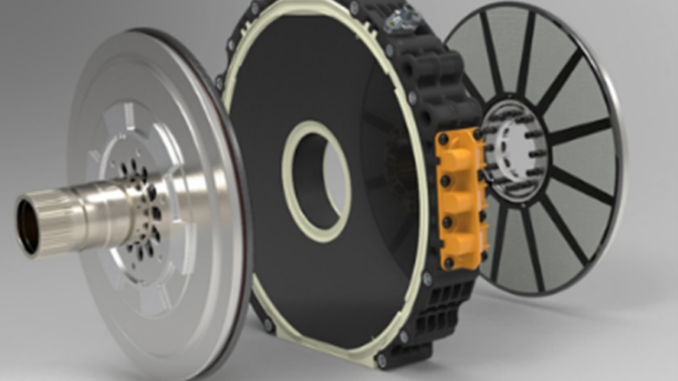
Example of an axial-flux motor design by YASA
A leading electric motor design company integrates Magcam’s Axial Flux Rotor Scanner in a high-performance motor production line.
Permanent magnet axial-flux motors are increasingly used in hybrid and pure electric powertrains in the automotive, aviation and electric bike industry. With short path axial-flux rotors, the direction of the magnetic flux is aligned parallel with the axis of rotation which allows the production of lighter and shorter motors with high torque density.
This case study presents a recent project with a leading electric vehicle motor development and manufacturing company. The company involved specializes in making permanent magnet axial-flux motors.
Reliability is paramount in the automotive industry. Automotive OEMs want evidence of the reliability and robustness of axial-flux motors for mass manufacturing, and this has been a challenge. This has led axial-flux motor suppliers to carry out their own extensive validation programs, in order to demonstrate that the reliability of their motors is equal to that of traditional radial flux types.
In this project, various versions of axial-flux rotors with different diameters and layouts had to be evaluated. A strong focus lies on the magnetic characteristics such as magnetic field distribution, field homogeneity of the different zones, zero crossings analysis, etc. In addition, the precision of the magnet positioning had to be inspected by using the magnetic field information of the invisible encapsulated magnets.
Additional objectives were speeding up development for new designs and improving production yields in cutting-edge axial-flux motor production technology.
Magcam’s magnetic field scanners are designed for a fast and accurate quality inspection of permanent magnets and assemblies such as radial- and axial-flux rotors. These measurement systems can be integrated into semi or fully automated production lines.
Unexpected and hard-to-simulate magnet quality issues can be identified efficiently thanks to the unique combination of a fast magnetic field scanning camera and the advanced data analysis features of MagScope, Magcam’s measurement and analysis software.
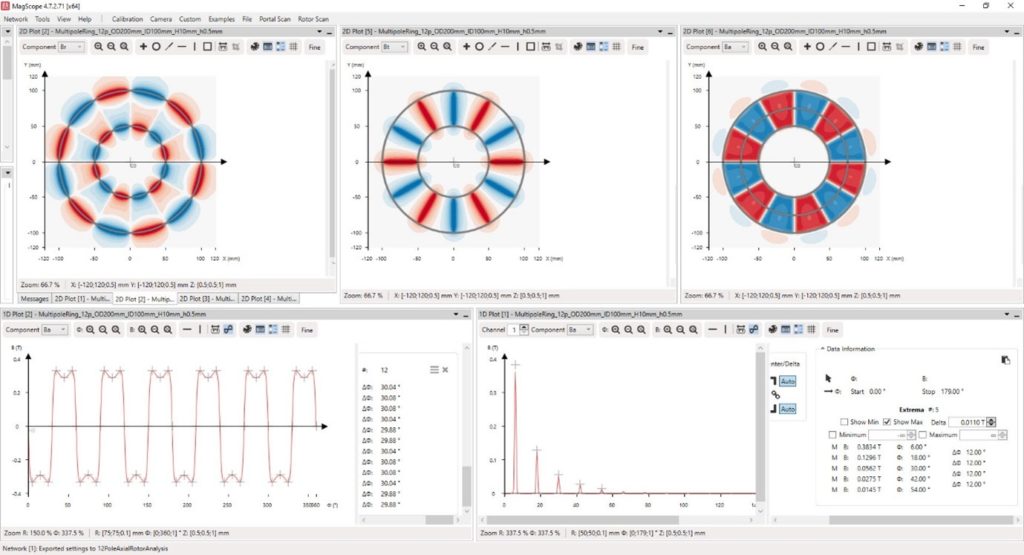
The axial-flux rotor scanning method is available for Magcam’s Combi Scanner and Rotor Scanner configurations and benefit from all well-known Magcam features such as high radial and angular resolutions, integrated laser surface measurements for mechanical verification or runout correction measurements, fast cycle times and in-line advanced data analysis.

One major challenge with axial machines is maintaining a uniform air gap between the rotor and the stator, as the magnetic forces are much higher than in radial machines. To obtain the most precise results, Magcam has developed an automated runout correction procedure using the integrated laser.
The measurement time depends on the selected angular and radial resolutions. Typical values are in the range between 1.0° and 0.1° for the angular resolution and radial resolutions down to 0.1mm are possible using the integrated Magcam MiniCube3D magnetic field camera.
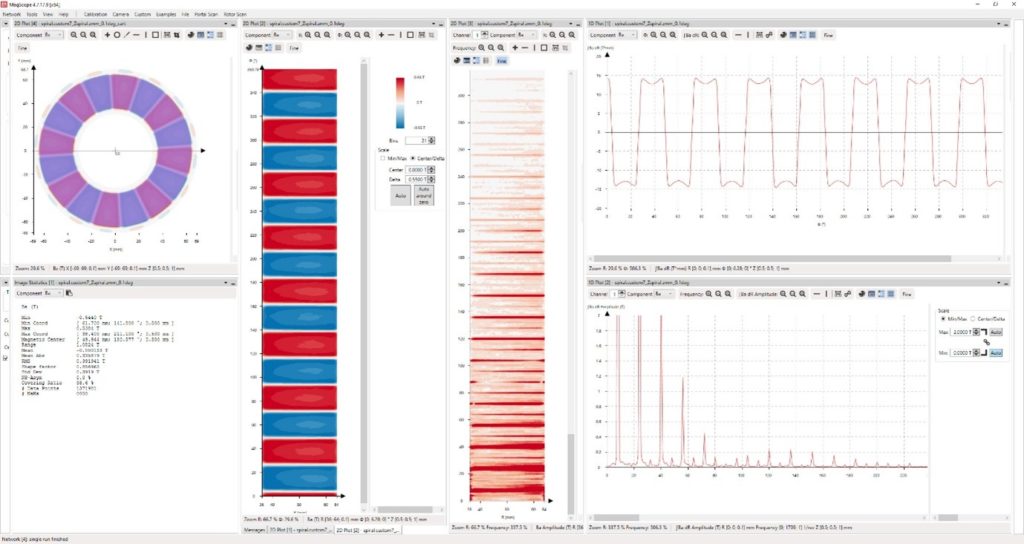
Magcam proposed to use the first test results as a starting point for identifying the correlation between good and bad rotors and as a guideline for the final end-of-line tests. This will eventually define the relevant quality parameters for a Pass/Fail window. This process allows the identification of faulty rotors early in the production process, thereby improving production yield and reducing scrapped components later in the process.
The Magcam system can also be used in the design and prototyping phases to identify magnetic issues early on in the development and speed up time-to-market.
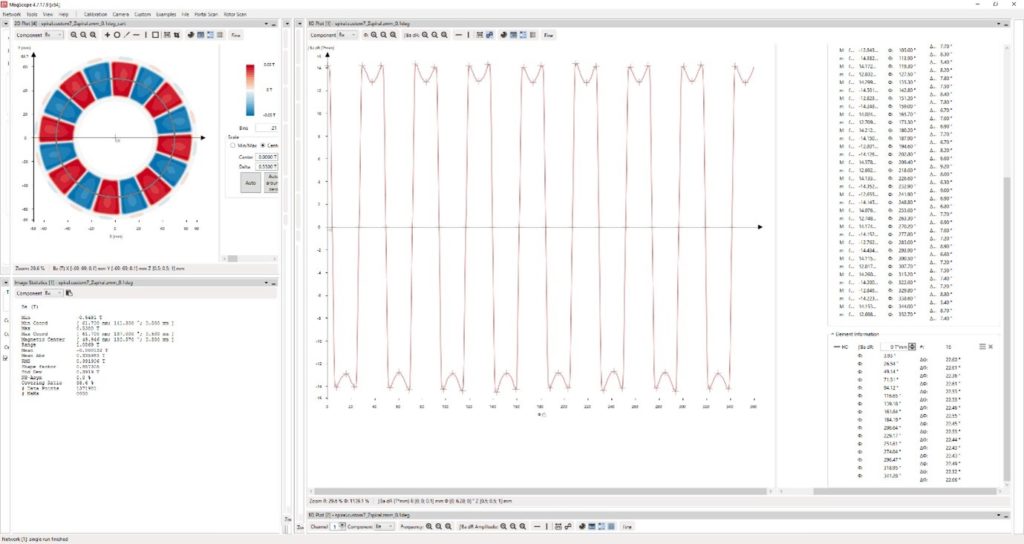
On the Magcam dedicated Windows computer running the Magcam MagScope software, data is collected as raw data, which can be exported to CSV data format. Information transfer to the customer SQL database is realized by means of Python scripts and daily reports are generated.
Next, Magcam was working on a new cogging torque analysis method for these axial flux rotors, similar to the radial flux rotors. This is already realized and proven by many users to be a very powerful feature.
A handheld barcode scanner was chosen to realize a semi-automatic handling process in a prototype line. The operator’s identity, the used tooling, rotor serial number, etc. are processed and secure the selection of a correct predefined measurement configuration.
“We are now designing a high-volume production line for which we are keen to incorporate your technology” commented the project manager.
After the on-site installation by Magcam engineers and the obligatory factory acceptance tests, the customer’s engineers were trained in programming measurement and analysis configurations (also called ‘networks’) in the MagScope software. Operators were trained to handle the measurement process. Calibration and maintenance procedures were likewise discussed.
Once the prototype testing process is finished at the UK subsidiary that was acquired last summer by a German premium-class car manufacturer, an innovative Magcam end-of-line testing setup will be incorporated into a mass-production manufacturing line.
History of this Case Study
Initial talks about this prototype line started almost 3 years ago after an even earlier introduction of the Magcam technology to the Senior Engineering staff on fairs and during personal meetings. Initial feasibility tests ran on a Magcam XY Portal Scanner delivering great results but with insufficient cycle times. Therefore Magcam developed the Axial Flux Rotor Scanner as an add-on for its portal and rotor scanner solutions.
In the meantime, Magcam’s Axial Flux Rotor Scanner has become a standard product and has gained ever increasing interest in the market. For more info see www.magcam.com.

